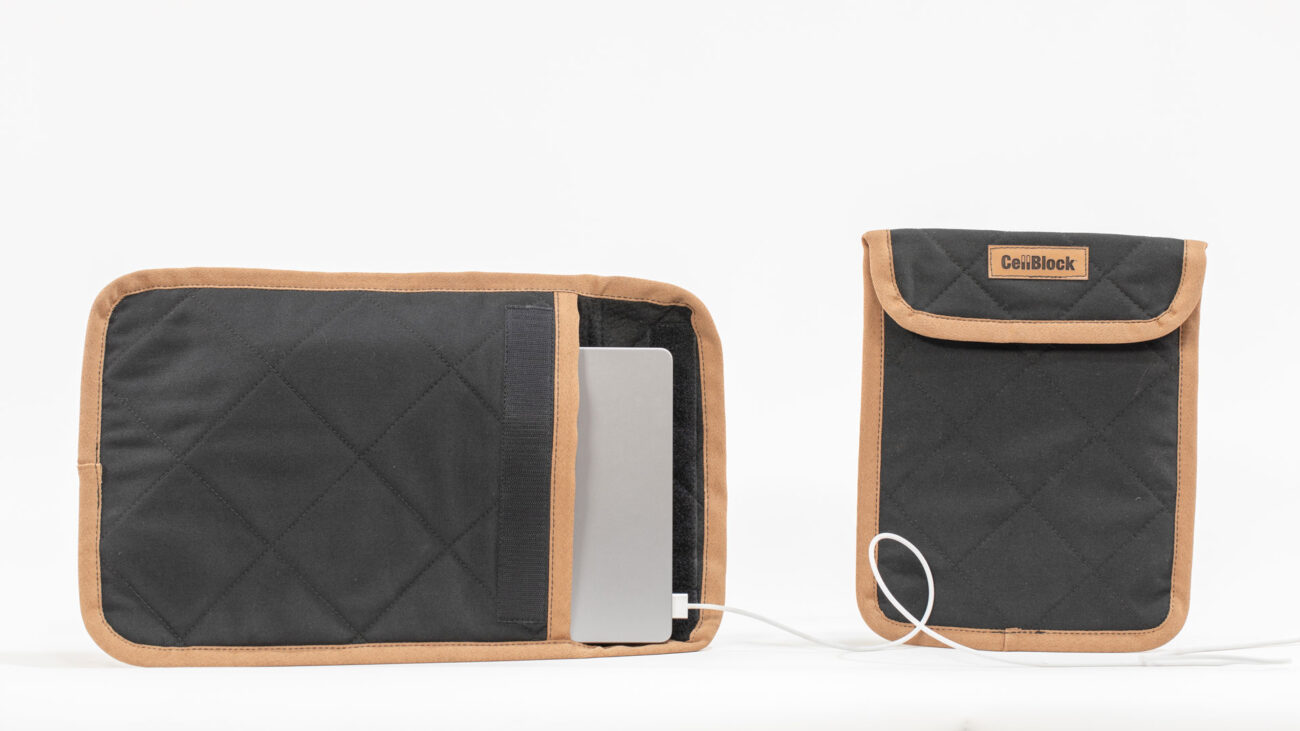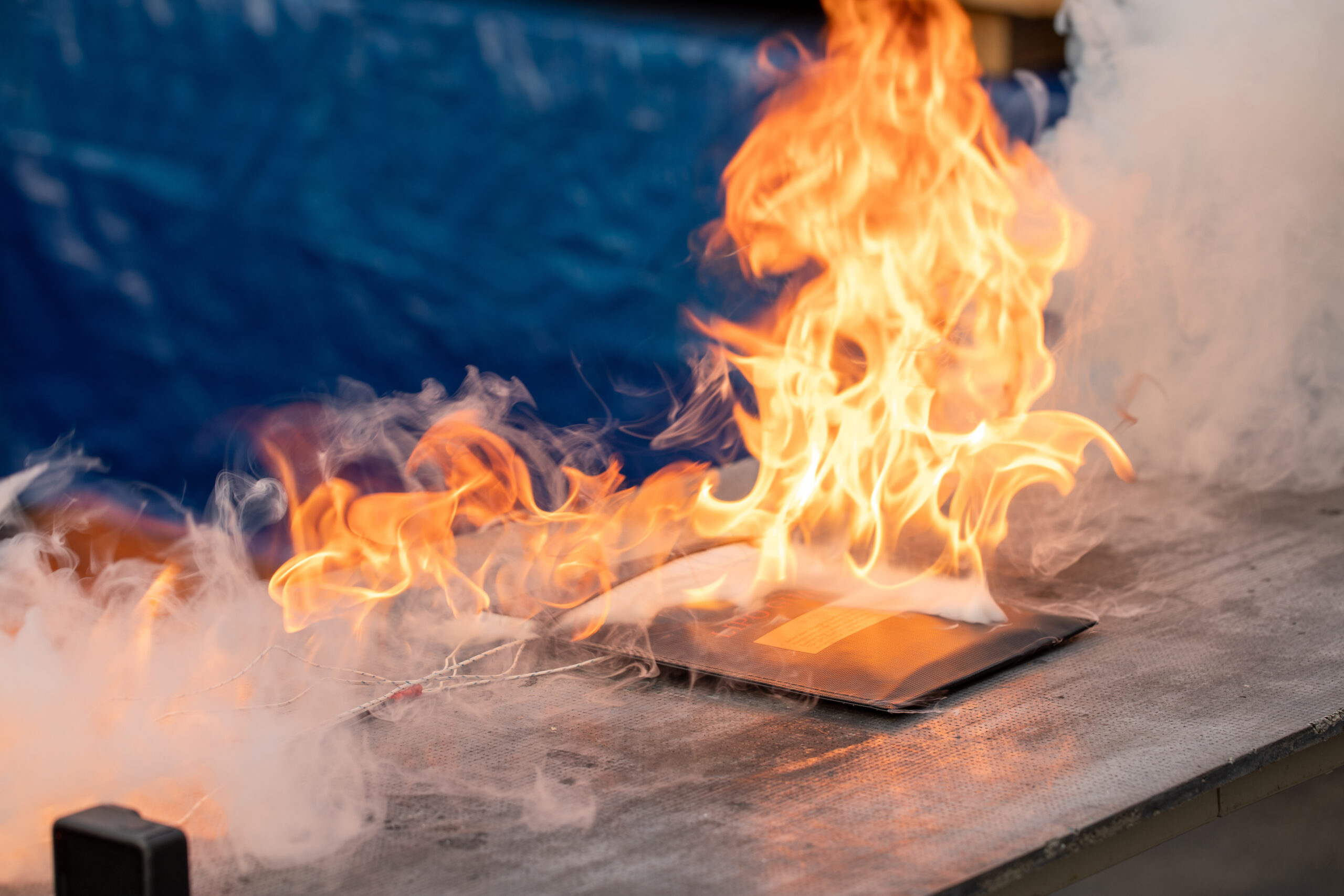Hopefully, you will never need to know how to stop a lithium-ion battery fire, but with an ever increasing reliance on battery-powered tools, toys, and technology, it’s valuable knowledge to have. These batteries pose a unique risk and are nearly impossible to extinguish by conventional means, so knowing how to stop a battery fire, if it should occur, is essential.
When lithium-ion batteries catch fire, it can lead to devastating consequences, such as the fatal fire that took the life of a New York City resident on December 3rd. That’s far from an isolated incident: lithium-ion batteries have been responsible for 240 fires, 124 injuries, and 18 deaths in New York City so far this year. Furthermore, the trend is not encouraging: between 2021 and 2023, New York has seen a tremendous increase in lithium-ion battery fires (1,500%), injuries (686%), and deaths (2,675%).

What Makes Lithium-Ion Battery Fires So Dangerous?
When the temperature inside a battery reaches a point that is higher than the heat that can be dissipated, it causes an escalation in temperature and pressure which can ignite the highly flammable vapor and electrolyte inside, resulting in a sometimes violent discharge of the remaining stored energy. This then overheats adjacent cells, and the runaway process repeats until all cells are engulfed, contributing to higher fire intensity.
Depending on the energy of the battery (size and level of charge), and proximity to other flammable items, the fire can quickly spread throughout a space. The dangers are exacerbated when the lithium-ion battery fire is blocking an egress, as is the case in many congested cities where residents rely heavily on e-bikes and other micromobility as a source of transportation.
What Causes Lithium-Ion Battery Fires?
Thermal runaway can happen for many reasons, but occurs most frequently with damaged or defectively manufactured cells, or during charging. Cells can overheat and explode when safety vents are blocked, overwhelmed, or if a cell is punctured. Cell venting of smoke or gas can also arise from a range of other causes including external overheating, external short circuiting, internal short circuiting, recharging a battery that has been over-discharged, high-rate charging, and even charging at cold temperatures.
While there is little danger of an undamaged, high-quality battery with a proper charger going into thermal runaway, any number of factors – many of them invisible – can cause a battery fire:
- Physical damage (the battery has been dropped, punctured, crushed, exposed to water, etc.)
- Overcharging
- Using charging equipment not designed for the battery (such as inexpensive third-party chargers)
- Exposure to extreme temperatures
- Product defects

How to Prevent Lithium-Ion Battery Fires
There are a number of precautions you can take to keep batteries from catching fire. We’ve covered this in more detail before, but here are some quick tips for preventing battery fires:
- Use only manufacturer-approved, UL-certified batteries and chargers for your device
- Inspect your battery and charger regularly for damage
- Unplug your device or battery after it’s fully charged
- Keep your battery or device away from extreme temperatures
- Use a fireproof sleeve when charging your device or battery
Preventing battery fires in the first place is always better than trying to put them out. Unfortunately, there may be a time when you’ll face a lithium-ion battery in thermal runaway.

How NOT to Stop a Lithium-Ion Battery Fire
Extinguishing lithium-ion batteries is problematic and potentially extremely dangerous. In addition to burning at a very high temperature, lithium creates its own fuel, which renders traditional extinguishing methods, such as water or foam, useless.
There exists a fair amount of misinformation regarding best practices to mitigate battery fire risk. One reason is the threat of thermal runaway in lithium-ion batteries is relatively new. As a result there are widely differing opinions on the best way to stop battery fires. Unfortunately, most mainstream recommendations have serious downsides:
Let it burn
Battery fires are so difficult to extinguish that some experts recommend letting them burn until they’ve exhausted the fuel supply. That might be fine if your battery is in the middle of an empty parking lot, but most of the time that’s not an option.
Halon
Halon has historically been a go-to suppressant on aircraft. It suppresses fire by chemically disrupting combustion and can temporarily subdue a battery fire, however there is a danger of re-ignition. Additionally, halon is detrimental to the ozone layer and has been banned since 1994.
Foam extinguisher
Foam is designed to smother by creating a film on the surface of the fire source, but the film will not survive the high temperatures reached in a lithium-ion battery fire. The same applies to wet chemical agents.
Vermiculite
Vermiculite is useful as a lightweight and absorbent packaging material, but it doesn’t function well as a fire suppressant. We’ve found that vermiculite will not extinguish a fire before its fuel supply is completely exhausted.
Water
Water is a readily available extinguishing agent that has long been recommended for battery fires, but it is falling out of favor with good reason:
- Water does not suppress or extinguish, and it does not break the reaction that is thermal runaway. Cooling is the only physical property.
- Water can create electrical shorts that lead to re-ignitions.
- Water accelerates hydrogen gas release.
- Water creates HF (hydrofluoric acid), which is highly toxic and corrosive.
- Water used on a battery fire will contain numerous contaminates, including oxides of metals, and is considered hazardous waste by numerous jurisdictions.
As you can see, many traditional and emerging fire suppression agents have drawbacks. We invested a great deal of research in devising a solution that was both effective, and safe.
The Best Way to Stop a Lithium-Ion Battery Fire
Extensive testing and reformulation has yielded what we believe is the single most effective battery fire suppressant on the market: CellBlockEX.
CellBlockEX was the result of an idea developed by Dylan Vandemark, now the CTO of CellBlockFCS. Vandemark saw the need for a more effective suppressant for lithium-ion battery fires and realized that a non-crystalline mineral granulate could be the answer. These granulates contain tiny pores, and, when applied to a lithium-ion battery fire, immediately provide several necessary functions for extinguishing high-energy battery fires. These include:
- Oxygen Displacement – Covering the battery fire load with a sufficient layer of CellBlockEX displaces available oxygen from the fire, starving it from external fuel.
- Phase Change and Isolation – CellBlockEX melts at ~1500° F, well within the range of a lithium battery fire. The phase change from solid to semi-liquid acts as a heat sink, dissipating energy, while forming an impervious hard shell around the fire load. The formed crystalline capsule around the battery prevents ignition of surrounding areas of energy density, including adjacent cells or batteries in proximity.
- Flammable Gas Disruption – Due to the nature of the CellBlockEX’s multicellular structure, the flammable gas is forced into physically separated micro-pores, breaking it into smaller concentrations beneath the ignition threshold, thus disrupting flammability of the gas. Another way to explain this is to think of each granule as a maze with no exit. The gases enter the granule and follow the maze from chamber to chamber and is then trapped.
- Sorbency of Fire Gases – CellBlockEX’s micro-porous structure and dry surface bind to large flammable molecules and vapors reducing their total volume, limiting their contribution to environmental ignition or toxicity.
This mineral granulate is also made almost entirely from recycled materials, which makes it the most environmentally-friendly fire suppression agent, and it is safe to humans and the environment. CellBlockEX is widely acknowledged to be the best answer to the question of how to stop a lithium-ion battery fire.
Why CellBlockEX is the True Blue Fire Suppression Media
The process of developing CellBlockEX required repeated testing and reformulation until the granulate performed to the highest possible standards. Our product is routinely analyzed for adherence to our stringent specifications. Once the product is approved for use, a blue dye is added to a small percentage of the granules during the manufacturing process. The reason for this is two-fold:
- Other companies have attempted to manufacture similar media, but their products do not use our proprietary formula of gain sizes (we’ve analyzed them) and would not be as effective. The addition of the blue ensures that the product you are using is genuine CellBlockEX, that it meets spec, and that it will be effective in mitigating a thermal event. It is why we refer to CellBlockEX as “the True Blue fire-suppressant.”
- The blue also serves as an indicator of “life span.” If CellBlockEX is being used as a preventative agent – such as in shipping applications – it can degrade with repeat use and will become less effective due to being contaminated, crushed and/or de-homogenized. When the blue becomes faded to the point of barely being detectable, we recommend discontinuing use of the product. Note that, if not contaminated by hazardous materials, the used CellBlockEX can be recycled.

What Makes CellBlockEX Different?
- The first mineral granulate fire suppressant backed by hours of research and development.
- Fine-tuned for battery fires. CellBlockEX contains a precisely-defined assortment of grain sizes to provide the maximum efficacy against battery fires.
- Tested Beyond Compliance™. CellBlock has been awarded Special Permits for shipping lithium-ion batteries through rigorous required testing. CellBlockEX has been successfully tested under conditions that exceed the compliance requirements.
- Patented delivery systems. While CellBlockEX can be applied as a loose granulate, it can also be deployed in the form of patented fire suppression pillows, or as part of integral delivery systems in our storage and shipping solutions.
- Less dust. We have refined our processes to minimize dust in CellBlockEX.
- Customer service. Every sphere of CellBlockEX comes with world-class customer service.
You can find out more about CellBlockEX here.
As we’ve seen, lithium-ion batteries can present a serious hazard. Hopefully you will never need this information, but if battery safety is important to you, consider this article as a resource for how to stop a lithium-ion battery fire.

